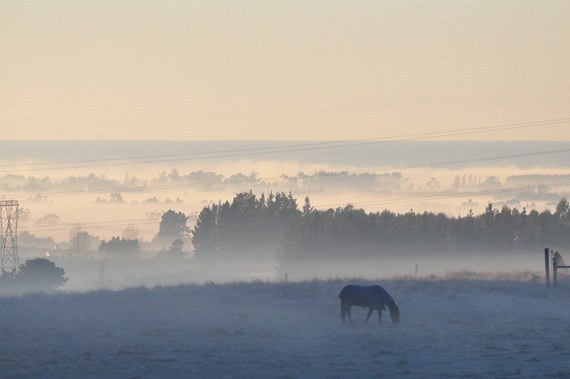
Become an expert on managing your horses pasture and sugar levels, particularly during frosts.
Pasture and sugar levels – managing risk – especially during frosts
Understanding how grass grows, and the effects of climatic changes on the fluctuating levels of sugars, is very important for owners of horses and ponies that are pre-disposed to laminitis and conditions which are exacerbated by consuming grass which has increased sugar levels.
The key points of how grass grows are below – (from the laminitis website).
Green plants create sugar through the process of photosynthesis.
carbon dioxide + water + sunlight = sugar + oxygen
Plants use the sugar for growth and reproduction - this process is called respiration.
glucose + oxygen = carbon dioxide + water + energy for growth/respiration
When sugar production from photosynthesis is greater than the sugar required for growth/reproduction, the excess sugar is stored as fructan or starch (carbohydrates) for later use.
Plants respire all the time, in darkness and in light, but only photosynthesize in light.
Increased light leads to increased photosynthesis (up to a point).
No light/darkness: respiration rate is higher than photosynthesis (there is no photosynthesis without light).
Dim light: photosynthesis at same rate of respiration.
Bright light: photosynthesis rate is higher than rate of respiration.
Under normal circumstances, when the temperature is above 5°C, grass undergoes sugar accumulation during the day, (higher on sunny days). The sugar levels will be highest at the end of a sunny day. These accumulated sugars are then used up overnight as the grass grows and sugar levels are lowest by 5am. This is one reason why it is better to turn your horse out at night onto pasture and then stable or yard during the day as the grass is accumulating sugar faster than it can use it for growth during the daytime. There are however some exceptions to this, and these are, when the grass is struggling to grow during drier seasons, and the temperature is too low for the grass to grow (frosty conditions). These environmental conditions result in heightened sugar levels, as they are stored in the plant ready for when the grass can grow.
OF KEY IMPORTANCE at this time of year when we are getting frosts, is that grass hardly grows (respires) when temperatures are below 5°C. Therefore, the levels of sugars build up in the plant, concentrating the amount available to your horse or pony as he grazes.
The Solution:
The risk of elevated sugars will remain if there is cold frosty weather with bright sunny days, and especially where the temperature does not rise above 5°C. Only once the temperature rises consistently above 5°C it will be sufficient for the plant to respire (grow and use up stored sugars), and on cloudy days will the sugar levels be lower (and safer) to graze.
If you are removing your horse from pasture over a risk period (or to reduce the effect of exposure to sugar levels in grass for shorter periods during a day), you could opt to replace some of your horses fibre (pasture requirement) with hay that has been soaked (to reduce sugar levels), or provide larger amounts of fibre in their diet.
TAKE HOME MESSAGE:
Prevent or limit access to grass during and after sunny frosty weather until the weather changes to milder nights and overcast days. Feed fibre sources with sugar and starch levels below 10% instead.
It is not the frost itself that is the risk, it is the weather conditions that cause the frost, so do not allow horses to graze once the frost has melted with the sun - wait until the grass has been able to respire and use up some of its sugar.

